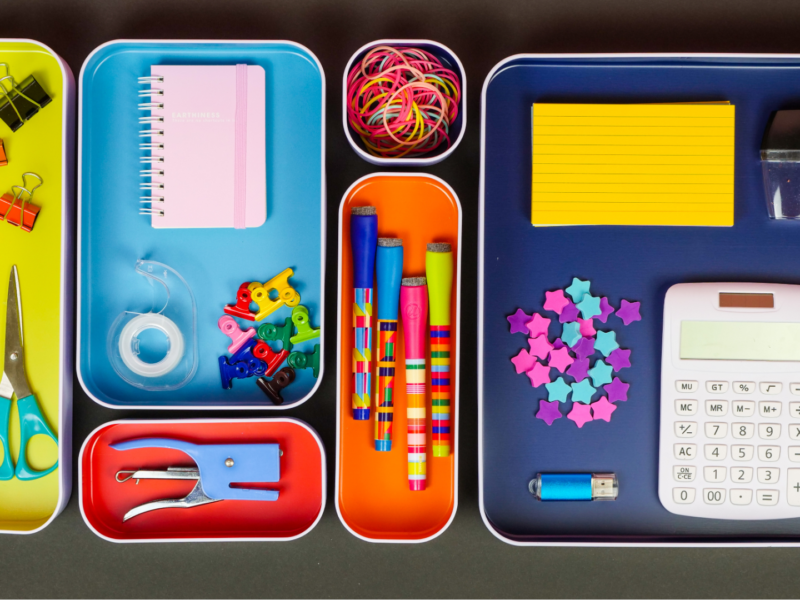Cerebrate Blog.
Explore strategies for skill development

8 Organizational IEP Goals to Support Executive Function Growth in the Classroom
Posted In Goals On June 12, 2025
Helping students strengthen their executive function skills begins with clear, actionable, and personalized goals, and organizational IEP goals are a powerful tool in this process. These goals not only address student learning needs but also equip educators with the data they need to adjust instruction, offer student empowerment through structured expectations, and improve student academic performance. In this post, we’ll explore eight well-crafted organizational IEP goals that support executive function skill development and build student confidence.
For students who struggle with executive functioning, such as planning, organizing, or prioritizing tasks, these goals can form the foundation for measurable progress. When embedded into executive function instruction, they help educators target executive function challenges while building students’ self-regulation, social skills, and learning independence.
Here are eight effective organizational IEP goals to consider for your next IEP meeting or classroom intervention plan:
-
Organized Workspace Goal
- Using organizational tools and strategies, _____ (student) will maintain an organized workspace to access needed materials promptly in _____ of _____ instances.
This goal targets the executive function definition of organization as the ability to keep materials in order. With proper tools and strategies, students learn how to set up workspaces that support attention, reduce distractions, and improve academic performance.
-
Backpack Check Goal
- Before leaving school, _____ (student) will check his/her backpack for organization, including removal of unnecessary items, and retrieving assignments or materials needed to complete his/her schoolwork _____% of the time.
Teaching executive function skills like routine backpack checks helps students build systems that reduce missed assignments and increase accountability.
-
Binder Organization Goal
- Using a binder, _____ (student) will organize his/her assignments and materials, maintaining an organized binder system _____% of the time across _____ consecutive weeks.
This goal provides a tangible method to monitor progress and teaches students how to categorize, file, and maintain materials for long-term success. It’s a practical example of using executive functioning tools to meet student learning needs.
-
Pre-Writing Organizer Goal
- When given a writing task, _____ (student) will organize his/her thoughts, ideas, and given information using a task-specific graphic organizer with _____% accuracy.
This goal connects writing skills with executive function strategies, helping students visually structure their thoughts before tackling composition, an important element in teaching executive function skills across subjects.
-
Reading Comprehension Note-Taking Goal
- During independent reading, _____ (student) will use the _____ note-taking method (i.e. Story Mapping, SQ3R, Annotations, etc.) to comprehend text with _____% accuracy in _____ of _____ trials.
Note-taking methods are proven executive function interventions. Whether using annotations or structured mapping, this goal helps students take ownership of their comprehension strategies.
-
Lesson Note-Taking Goal
- During a teacher-led lesson or video, _____ (student) will use the _____ note-taking method (Cornell Notes, Outlining Notes, Charting Notes, Boxing Notes, or Video Notes) to effectively take legible, comprehensible notes _____% of the time in _____ of _____ opportunities.
This aligns with executive function learning and student engagement strategies. Taking effective notes improves attention, retention, and classroom performance.
-
Project Planning Goal
- Using a project organizer, _____ (student) will organize the details of his/her project into parts to plan the completion of the project on time in _____ of _____ opportunities.
Project organizers support students’ time management and planning—two key executive function areas. This goal builds a step-by-step framework to guide students from vision to execution.
-
Weekly Task Prioritization Goal
- Using organizational tools, _____ (student) will order his/her weekly tasks by priority, giving consideration to due dates, the time needed to complete tasks, and his/her leisure/extracurricular activities, and complete the tasks on time _____% of the time over _____ consecutive weeks.
Prioritization is a cornerstone of executive function instruction. With this goal, students learn how to balance academic, personal, and social commitments—a life skill that improves their performance well beyond the classroom.
Supporting Tools for Implementation of Organizational IEP Goals
When implementing organizational IEP goals, pairing them with executive function lessons, tools, and curricula enhances their effectiveness. Consider incorporating:
- Visual checklists and timers
- Binder systems and color-coded folders
- Note-taking templates and digital organizers
- Self-monitoring and reflection tools
If you’re looking for a deeper dive into how to teach the executive function skill of organization, check out our related blog: What is Organization?
You can also explore our For Students section to see how our executive function curriculum can support your classroom and improve students’ academic performance.
Stay Connected
Want more content like this delivered to your inbox?
Sign up for our newsletter for tools, tips, and teaching strategies to support executive function growth in your students.
Organizational IEP goals are more than just paperwork—they’re a way to build student agency, address classroom interventions for behavior problems, and ensure that your executive function instruction is customized and meaningful. Whether you’re just beginning to use executive function tools or you’re refining your IEP process, these goals can provide the roadmap for meaningful change.

